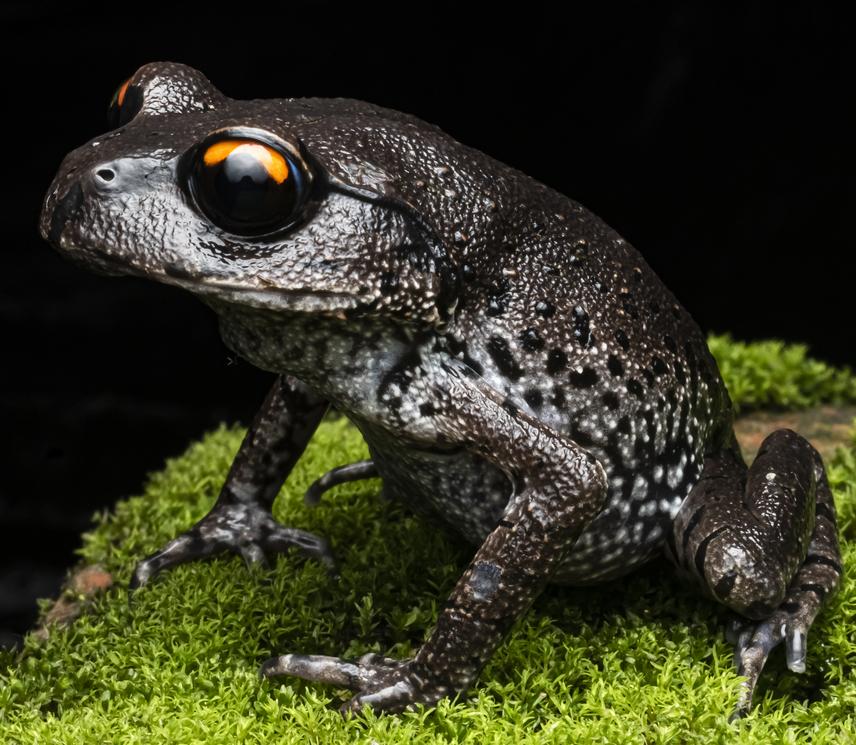Sanath Chandra Bohra
Limestone caves in Meghalaya, India, represent unique and fragile ecosystems that harbour an array of biodiversity, particularly herpetofauna (reptiles and amphibians). Despite being a biodiversity hotspot, these caves remain largely unexplored, with limited studies on their herpetofaunal diversity and ecological roles. This project aims to bridge this knowledge gap by conducting a comprehensive survey of herpetofaunal species within Meghalaya’s limestone cave ecosystems.

Leptobrachium smithii, Khasi Hills. ©Sanath Chandra Bohra.
Our primary objectives include documenting species diversity, assessing their ecological roles, and identifying potential threats to their survival. We will employ a combination of field surveys, DNA barcoding, and habitat characterisation to gain insights into the distribution and taxonomy of these species. Special attention will be given to species that are endemic, data-deficient, or potentially new to science.
Furthermore, Meghalaya’s limestone caves face increasing threats from anthropogenic activities, particularly limestone extraction for cement production, which endangers both biodiversity and the structural integrity of these caves. By analysing environmental factors, studying species-habitat interactions, and assessing conservation needs, we aim to formulate practical conservation strategies. Our work will contribute to species protection under international frameworks like the IUCN Red List and facilitate policy recommendations for cave ecosystem preservation.
A key component of the project is community engagement. We plan to collaborate with local communities, researchers, and government agencies to raise awareness about cave conservation. Educational workshops on snake identification and snakebite management will be conducted in schools and colleges to address misconceptions and promote conservation-friendly attitudes.
The expected outcomes include an annotated checklist of cave-dwelling herpetofauna, species descriptions, conservation action plans, and awareness programmes for local communities. Our findings will be published in peer-reviewed journals, ensuring long-term accessibility to researchers and policymakers.
This project is a crucial step toward conserving Meghalaya’s limestone cave ecosystems by integrating scientific research, conservation action, and community participation, ultimately ensuring the protection of these unique and vulnerable habitats.
Header image: Ichthyophis cf. garoensis, Garo Hills.